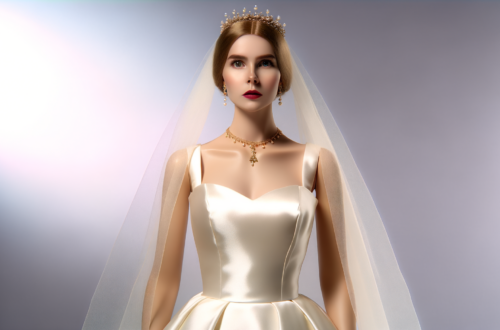When it’s time to bid farewell, dressing appropriately for a funeral is a way to show respect and sympathy. This article delves into the subtleties of selecting the perfect dress for such somber occasions, ensuring you convey the right sentiment during these final tributes.
Understanding Funeral Dress Codes
Understanding funeral dress codes requires a delicate balance of respecting the solemnity of the occasion while honoring diverse cultural and religious practices. In Western societies, the tradition of wearing black to funerals symbolizes mourning and respect for the deceased. However, this practice varies significantly worldwide, with some cultures donning white or other colors to represent purification, rebirth, or celebration of life.
Funeral attire can be broadly classified into formal, semi-formal, and informal categories. Formal wear typically involves suits and dresses in dark, muted colors, reflecting the gravity of the event. Semi-formal attire, while still respectful, allows for a slightly lighter touch, possibly incorporating softer fabrics and subdued patterns. Informal dress codes are less about specific garments and more about the intention to dress respectfully, avoiding casual or flashy items.
Religious and cultural considerations often necessitate adjustments to these general categories. For example, in some Eastern traditions, white is preferred over black, and specific garments like the Jewish “kittel” or Islamic “kafan” may be required. It is of utmost importance to prioritize the bereaved family’s wishes or the deceased’s last will when selecting an outfit.
To navigate funeral dress codes adeptly, inquire about any specific requirements beforehand, considering the setting, religion, and culture involved. Choosing an outfit that is understated, conservative, and in darker colors (unless advised otherwise) is usually a safe approach. By understanding and adhering to these nuanced guidelines, attendees can offer their respects in a manner that is both culturally sensitive and appropriately solemn.
Selecting the Right Garment
Selecting the right garment for a funeral is a delicate balance between showing respect and expressing personal style within the constraints of tradition. While the previous chapter explored the cultural and historical contexts of funeral attire, it is equally important to understand how to personalize these traditions to suit individual needs. The choice of dress or suit should be informed not only by cultural norms but also by practical considerations such as climate and location. For outdoor services in warmer climates, lighter materials and layers may be appropriate, whereas indoor or cooler climate funerals might call for heavier fabrics.
Timeless pieces often serve as a safe bet, offering a classic silhouette that honors the solemnity of the occasion. However, modern interpretations of funeral attire can also be appropriate, incorporating subtle, contemporary details into otherwise classic attire. The key is to maintain a conservative approach, avoiding anything overly flashy or attention-grabbing.
Black remains the most traditional and preferred color for funeral attire, symbolizing mourning and respect for the deceased. Yet, it is increasingly acceptable to deviate from black, especially when the family specifies or the deceased’s wishes were for a less traditional service. Dark, muted colors such as navy, dark gray, or even deep greens and purples can be suitable alternatives, provided they are not overly bright or distracting.
It is essential to consider different body types and ages when selecting funeral attire, ensuring that the chosen garment is not only respectful but also comfortable and appropriate for the wearer. For instance, older attendees might prefer more conservative styles, while younger individuals may opt for slightly more contemporary pieces, provided they still align with the overall tone of respect and solemnity.
Ultimately, the goal is to find a balance between comfort and formality, ensuring that one’s attire is suitable for the occasion without compromising on personal style. By carefully considering the factors of climate, location, and traditional versus modern interpretations, attendees can select garments that pay homage to the deceased while remaining true to their personal aesthetic. This approach to selecting the right garment sets the stage for the next consideration in funeral attire: accessorizing with respect, where the focus shifts to selecting shoes, jewelry, and headwear that complement the outfit without overshadowing the purpose of the day.
Accessorizing with Respect
Once the right garment for a funeral has been selected, following the guidance offered in understanding the delicate balance between comfort, formality, and the observance of color protocols, the next step is to consider accessorizing with respect. Shoes, jewelry, and headwear must be chosen not only to complement the outfit but also to honor the solemnity of the occasion.
When it comes to shoes, opt for modest, closed-toe options in dark colors. High heels are acceptable as long as they are not overly ostentatious or likely to cause discomfort during the service. For men, polished dress shoes in black or dark brown are most appropriate.
Jewelry should be kept to a minimum. Simple pieces like a watch, a pair of stud earrings, or a slender necklace can add a touch of personal expression while respecting the event’s gravity. However, it is essential to avoid anything that might be considered flashy or that could create noise, such as bangles.
Headwear should be selected with cultural and religious customs in mind. In some cultures, it is traditional or respectful to wear hats or head scarves. If you choose to wear a hat, ensure it is subdued in color and style. For those attending a religious funeral service where specific head coverings are customary, like a yarmulke or hijab, it’s crucial to adhere to these traditions respectfully.
Above all, the key is simplicity, modesty, and discretion. Accessories should not draw undue attention but should rather serve as a respectful nod to the deceased and their loved ones. By carefully selecting accessories that adhere to these principles, attendees can pay their respects in a manner that is both dignified and appropriate.
Conclusions
Choosing the best dress for a funeral is about honoring the departed and showing compassion for those who grieve. It requires sensitivity to tradition, culture, and the stated wishes of the family. In selecting attire that is respectful and appropriate, you pay homage to the life that has passed and demonstrate solidarity with the bereaved.



